Unprocessed rice has an inedible husk that must be removed without breaking the grain. Until the late eighteenth century, when planters began experimenting with automation, rice produced in South Carolina was milled by hand using a mortar and pestle, such as the one below. The technique originated in West Africa.
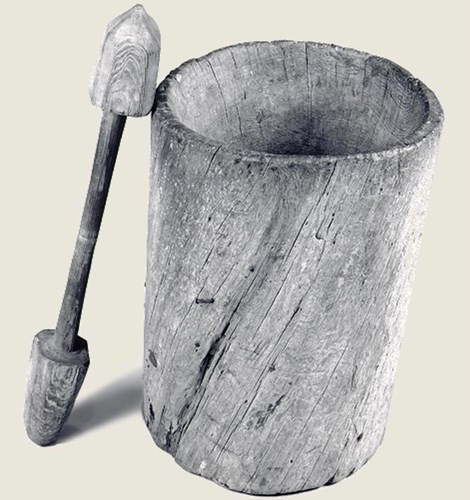
Slaves brought with them the dominant method of hand milling used for the first century of rice culture. They hollowed out the top portion of a log to create a mortar and then fashioned a pestle of wood. They then lifted the pestle and allowed gravity to drive it back into the mortar where it hit the rice….Planters recognized that this process required a great deal of labor, and, as one planter reported in DeBow’s Review, was “tedious, destructive to the laborer, and very exhausting to animal power.”
James H. Tuten, Lowcountry Time and Tide: the Fall of the South Carolina Rice Kingdom
In 1787 English millwright and inventor Jonathan Lucas built the world’s first water-powered rice mill, combining rice grinding and mortar and pestle technology and revolutionizing the rice milling industry. In 1802 John Drayton published this drawing of the interior of one of Lucas’s water-powered mills, which utilized the power of the tides to pound the rice.
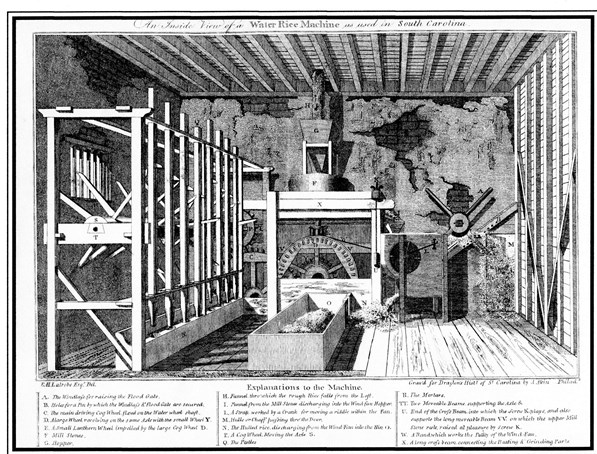
Drayton described the mills in his book, A View of South-Carolina, As Respects Her Natural and Civil Concern:
The dispatch, and neatness of work of these mills is extremely pleasing, particularly when we consider the small attendance necessary for working them. Three persons can manage such mills, in all their changes; and one week with another they will beat out one hundred barrels of rice, each of 600 lbs weight, neat….For these mills the public is indebted to the exertions and ingenuity of Mr. Jonathan Lucas; who for eight or ten years past been engaged in their construction. The rice field banks, in these cases, form reservoirs for the mills; into which the floodtide is introduced, through locks or flood gates, which shut of themselves with the turn of the tide. And as soon as the ebb tide has made about two or three hours, the mill commences its operations and works until a quarter flood or more.
John Drayton, A View of South-Carolina, As Respects Her Natural and Civil Concern, 1802
In 1801, Lucas built a large tidal-powered toll rice mill on the Ashley River, and Charleston became the center of the rice-milling industry. Pictured below are the West Point Rice Mills in Charleston, built by a descendant of Jonathan Lucas in 1860.
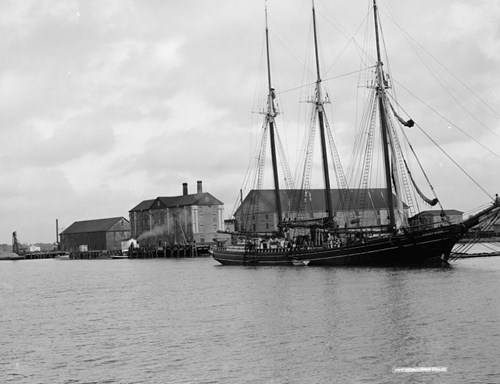
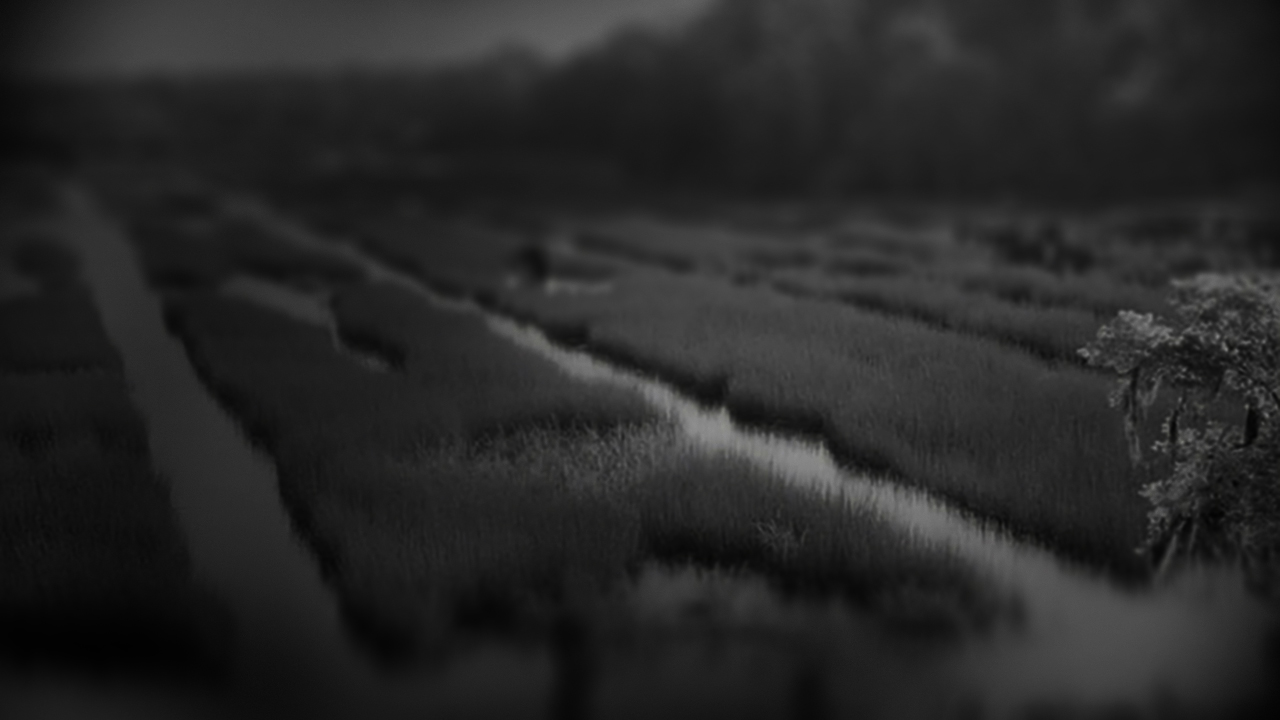
By 1860 there were twelve rice pounding mills in Georgetown District, including the mill near Barnyard Village on Friendfield Plantation, which was built by William Algernon Alston in 1858.
Located on high ground near the rice fields, the mill was operated by steam rather than by the tides. It was a rectangular brick building that cost Alston $30,000.
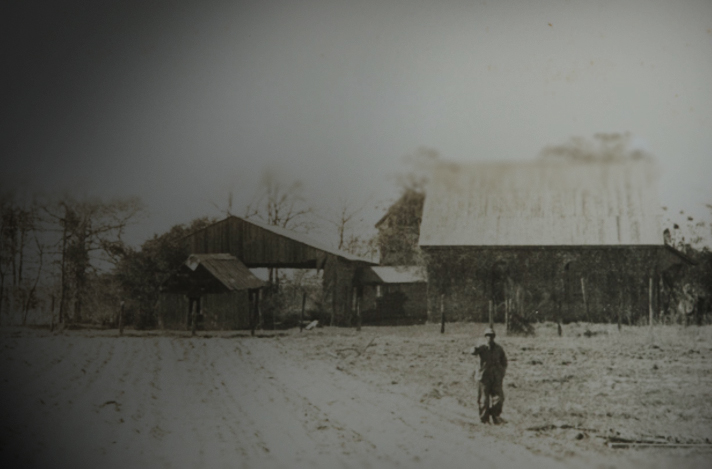
The 1860 census shows that Alston’s mill was not operating as of June 1st of that year. Nor was it reactivated after the Civil War or Alston’s death in 1866, and in this circa 1875 photo of the mill it appears abandoned.
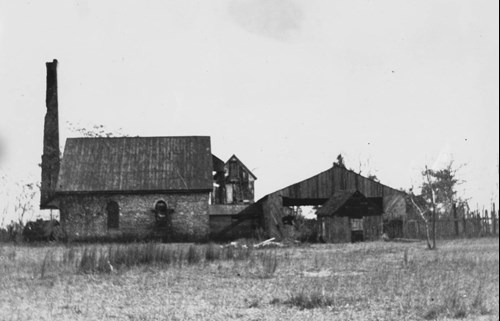
In 1875, Robert and Eliza Donaldson bought Alston’s rice plantations, calling the combined properties Friendfield. They began cultivating rice and restored the mill to full production, adding machinery and reinforcing walls. The Georgetown Times described the Donaldson mill as “...one of the oldest and best buildings in the county - a landmark - and intended for pounding as well as threshing...made of brick, with iron doors and window frames, and cost considerable money.”
The Donaldsons came late to rice planting. Between 1860 and 1870 rice production in Georgetown County declined by over 90% and agricultural land lost more than 80% of its value. Commercial rice production moved west, to Texas and Louisiana, as seen in this photograph taken in 1910. Today's major Southern rice growing states are Arkansas, Louisiana, Mississippi, Missouri, and Texas.

In the 1890s the Donaldsons began leasing some of their rice fields to duck hunters, and in 1894 Robert Donaldson died. His sons were still operating the mill in 1902 when it burned. By 1904, when Bernard Baruch visited the area looking for a hunting retreat, they were ready to sell.

